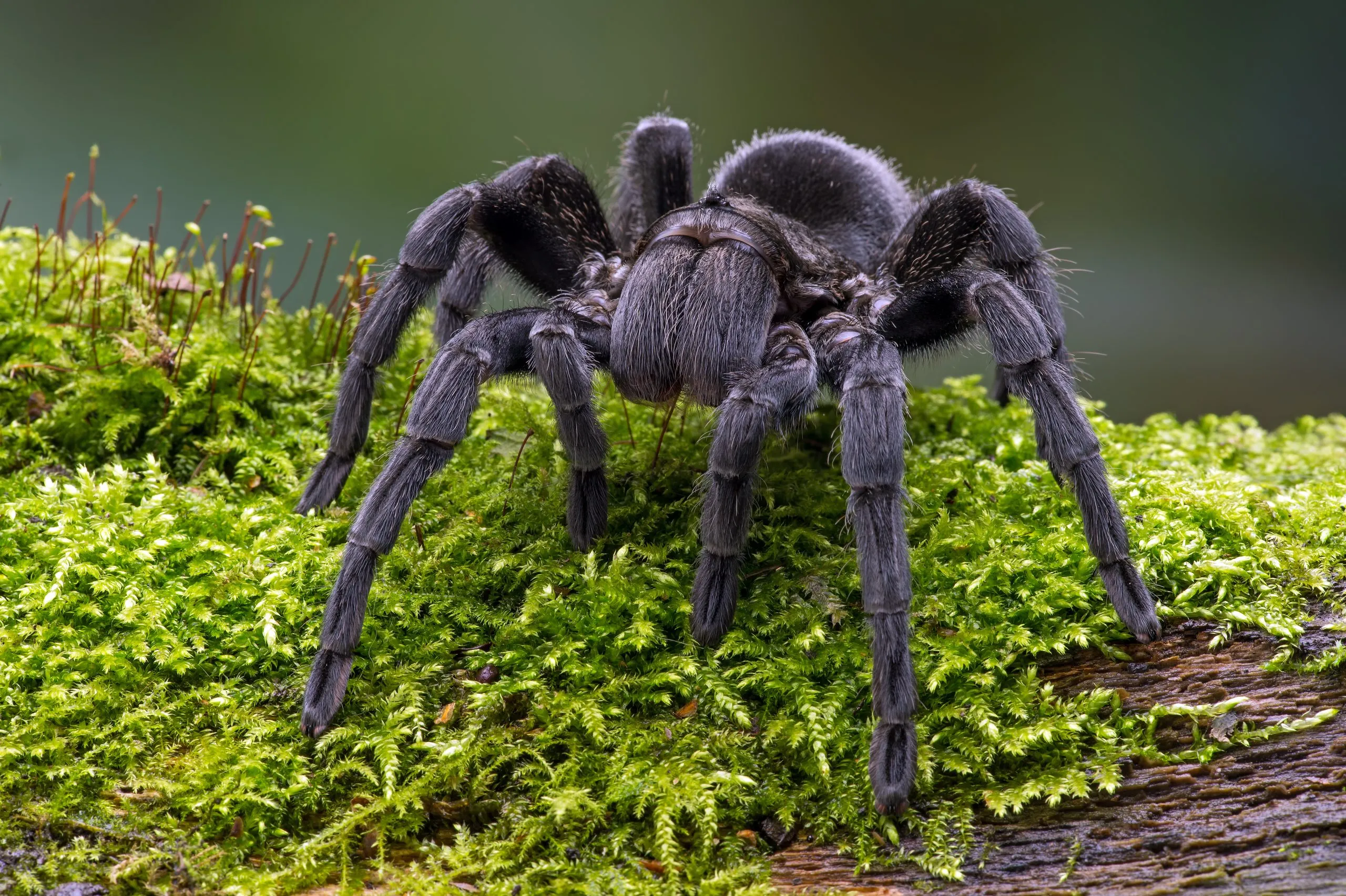Tarantula Facts Top 5 Things You Should Know
Tarantulas, with their imposing size and often hairy appearance, can be both fascinating and intimidating creatures. These arachnids have captured the interest of scientists, pet owners, and nature enthusiasts alike. This article delves into some of the most intriguing facts about tarantulas, exploring their physical characteristics, habitats, behaviors, and life cycles. From their impressive size and diverse appearances to their unique hunting strategies and defensive mechanisms, the world of tarantulas is full of surprises. This exploration will provide a comprehensive overview of these captivating creatures, offering insights into their lives and the environments they inhabit. Get ready to discover the secrets of these amazing spiders.
What are Tarantulas
Tarantulas belong to the Theraphosidae family, a group of large and often hairy spiders. They are found in various parts of the world, primarily in tropical and subtropical regions. These spiders are known for their size, with some species having leg spans that can exceed 10 inches. They are typically nocturnal hunters, preying on insects, small animals, and sometimes even birds. Tarantulas are not typically considered aggressive and prefer to avoid confrontation. However, they possess several defense mechanisms, including urticating hairs and, in some cases, the ability to bite. Their diverse appearances, ranging from vibrant colors to more subdued tones, make them a visually captivating group of arachnids. They play a crucial role in their ecosystems, helping to control insect populations.
Physical Characteristics
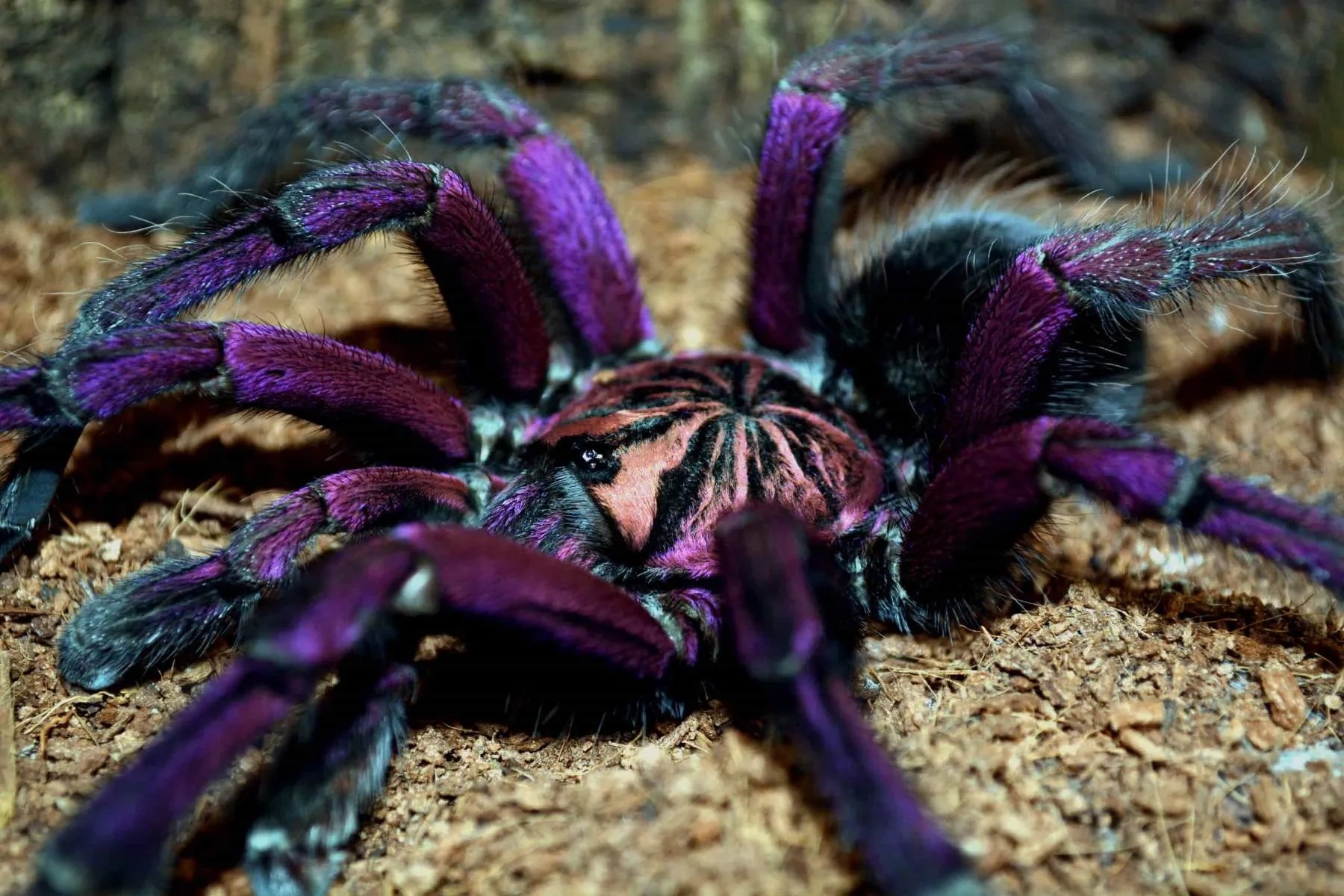
Tarantulas are easily recognizable by their size and distinctive physical features. Their bodies are divided into two main parts: the cephalothorax (fused head and thorax) and the abdomen. The cephalothorax houses the spider’s eyes, mouthparts, and legs, while the abdomen contains the internal organs. One of the most striking features of tarantulas is their hairy bodies, which serve a variety of purposes, including sensory reception and defense. These hairs can be urticating, meaning they can cause irritation when they come into contact with skin. Their eight legs are segmented and covered in hairs and spines, aiding in movement and prey capture. The chelicerae, or mouthparts, are strong and equipped with fangs that are used to inject venom into prey. Tarantulas also possess spinnerets at the end of their abdomen, which they use to produce silk for creating webs and lining their burrows.
Size and Appearance
Tarantula sizes vary greatly depending on the species. Some tarantulas are relatively small, with leg spans of only a few inches, while others are among the largest spiders in the world. The Goliath birdeater (Theraphosa blondi) can have a leg span of up to 12 inches, making it one of the largest spiders on Earth. Appearance also varies widely among tarantula species. They can be found in a range of colors and patterns, from the vibrant blues and oranges of the cobalt blue tarantula to the more muted browns and blacks of other species. Their bodies are covered in a dense layer of hairs, which can be short and velvety or long and coarse. These hairs can also vary in color, adding to the diversity of their appearances. This variety makes tarantulas a fascinating group of spiders to observe and study.
Colors and Patterns
Tarantula coloration ranges from the subdued browns and blacks of terrestrial species to the vibrant blues, oranges, and yellows of arboreal varieties. These colors often serve as camouflage, helping the tarantula blend in with its surroundings and avoid predators. Some tarantulas have intricate patterns on their bodies, such as stripes, spots, or bands, which can further enhance their camouflage or serve as a form of species recognition. For example, the Mexican redknee tarantula (Brachypelma hamorii) is known for its distinctive orange bands on its legs. The diverse range of colors and patterns also contributes to the aesthetic appeal of these spiders, making them popular among hobbyists and enthusiasts who appreciate their unique appearances. Coloration also plays a role in attracting mates, with males often displaying brighter colors during the breeding season.
Habitat and Distribution
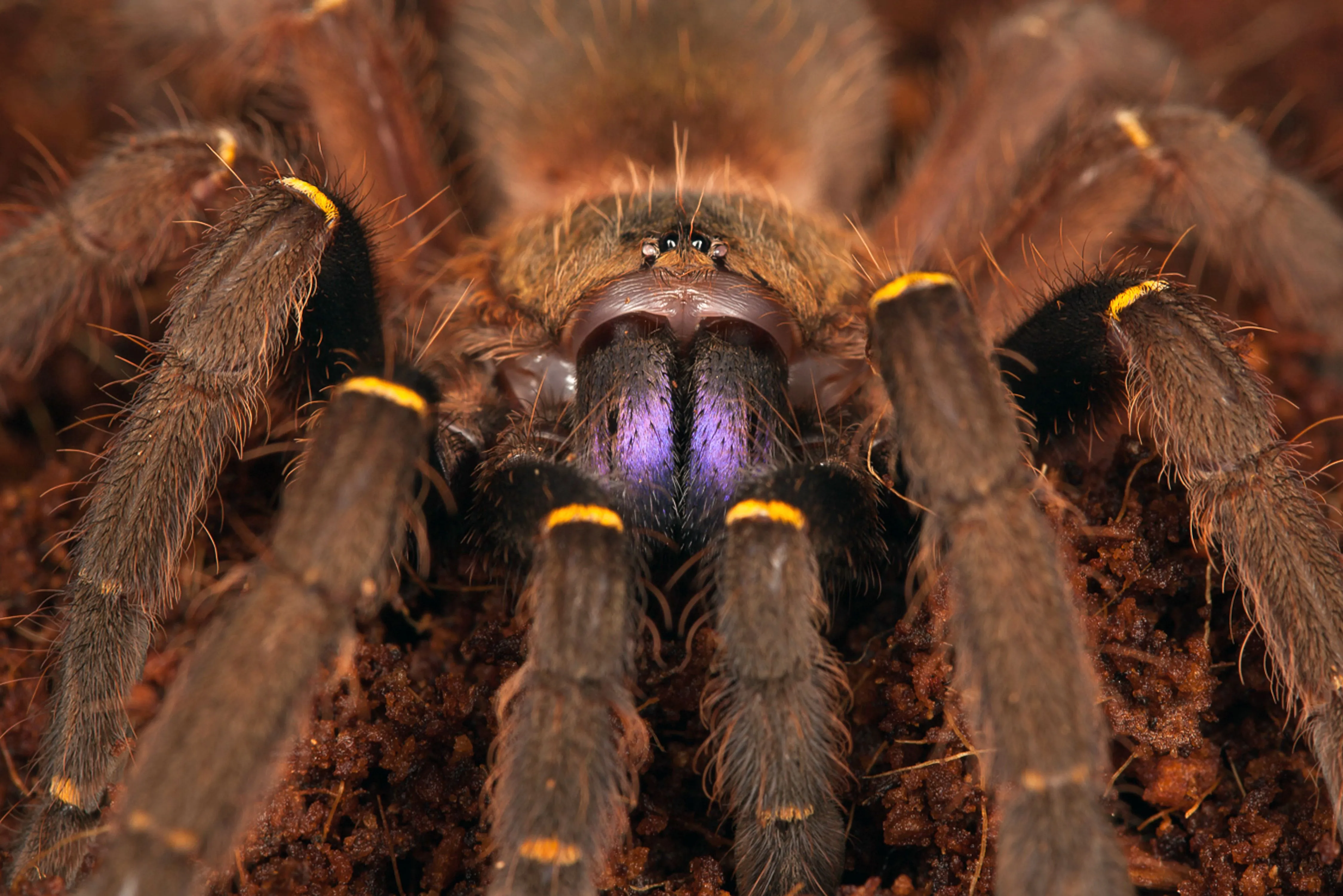
Tarantulas are found in a wide range of habitats across the globe, primarily in warmer climates. Their distribution is influenced by factors such as temperature, humidity, and the availability of prey. They have adapted to various environments, from arid deserts to humid rainforests. They are typically found in burrows, under rocks, or in the foliage of trees. Their ability to thrive in diverse environments highlights their adaptability and resilience as a species. Different species have specific habitat preferences, such as ground-dwelling, arboreal (tree-dwelling), or burrowing lifestyles. Their distribution patterns often reflect these preferences, with some species being highly localized while others have wider ranges. Understanding their habitat requirements is crucial for their conservation and for responsible pet ownership.
Where do Tarantulas Live
Tarantulas inhabit a variety of environments around the world, including North and South America, Africa, Asia, and Australia. Each region offers unique climatic conditions that support different species. Within these broad regions, tarantulas can be found in a diverse array of specific habitats. Some species prefer to live in burrows, which they dig in the ground or utilize natural cavities. Others are arboreal, dwelling in trees and shrubs, while some are terrestrial, moving freely across the ground. The habitat they choose often depends on factors such as the availability of food, the presence of potential predators, and the climate of the region. Their ability to thrive in these various settings demonstrates their remarkable adaptability.
Common Habitats
Common tarantula habitats include tropical rainforests, savannas, deserts, and grasslands. In rainforests, they often live in burrows or among the dense foliage, where they can find shelter from the sun and predators. Savannas and grasslands provide ample space for ground-dwelling species to roam and hunt. In desert environments, tarantulas are adapted to survive in harsh conditions, often burrowing deep underground to escape the heat. The specific habitat preferences vary widely among species, but these environments provide the essential resources and conditions they need to survive. Their ability to find suitable habitats in different environments demonstrates their resilience as a species. Careful preservation of these habitats is crucial for their continued existence.
Diet and Feeding Habits
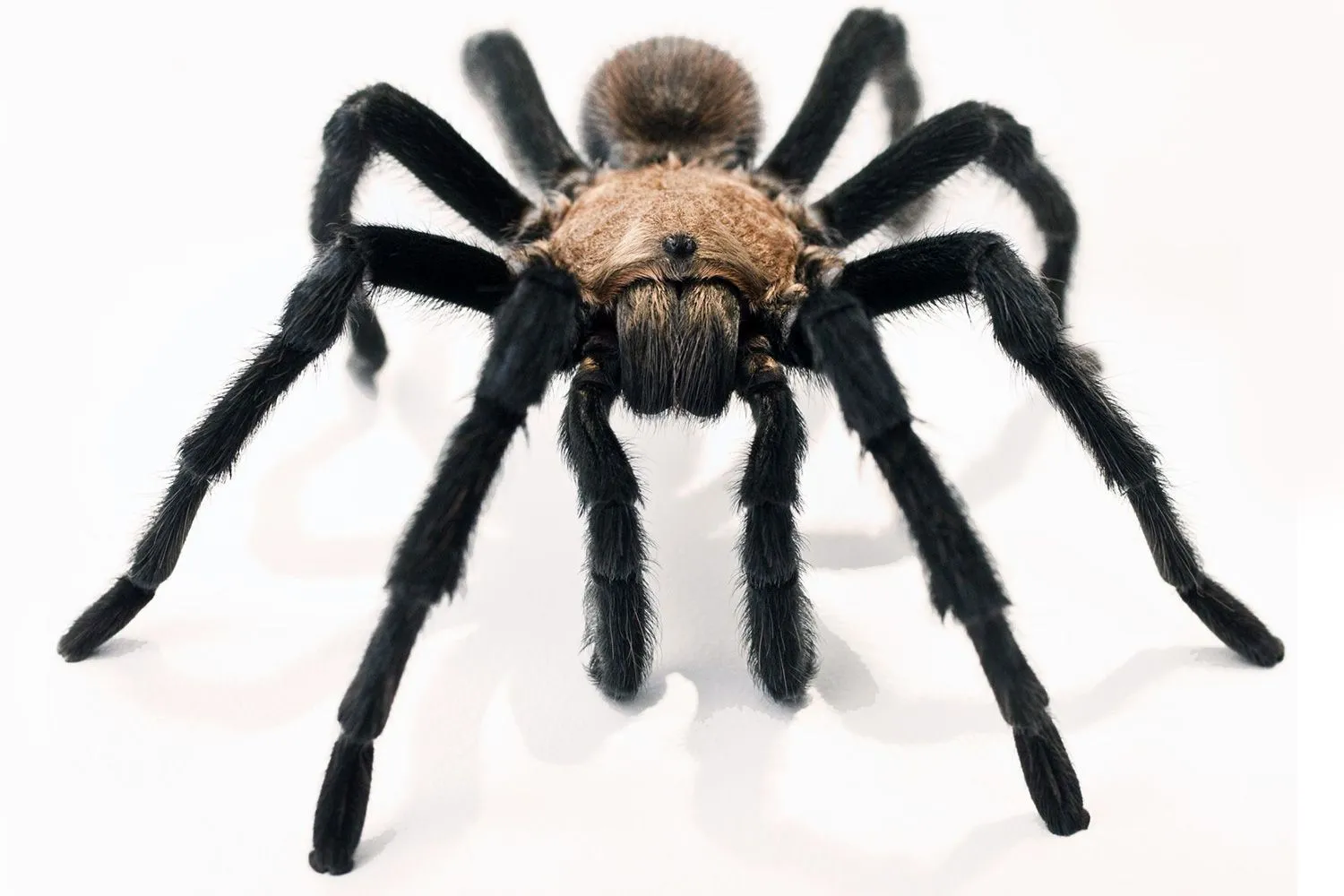
Tarantulas are primarily carnivorous predators. Their diet consists mainly of insects, but they can also consume other invertebrates and even small vertebrates. They are opportunistic feeders, meaning they will eat whatever prey is available. Their hunting strategies and feeding habits vary depending on their size, habitat, and the types of prey they encounter. Tarantulas play a vital role in their ecosystems by controlling insect populations and serving as a food source for other animals. The efficiency with which they capture and consume prey highlights their predatory adaptations. Their feeding habits are essential for their survival and contribute to the balance of the ecosystems they inhabit.
What do Tarantulas Eat
The diet of a tarantula can include a variety of prey items, with insects forming the bulk of their meals. They consume crickets, mealworms, roaches, and other insects. Larger tarantulas may also prey on small vertebrates, such as lizards, mice, and even small birds. The size and type of prey they consume depend on the size of the tarantula itself and the availability of prey in its habitat. Juvenile tarantulas typically eat smaller insects, while adults can take down larger prey. They use their strong chelicerae (mouthparts) and fangs to inject venom that paralyzes and begins to digest their prey. This allows them to feed efficiently, absorbing the nutrients they need to survive and grow.
Hunting Techniques
Tarantulas are ambush predators, meaning they typically wait for prey to come within striking distance rather than actively chasing them. Some species construct webs to trap prey, while others rely on their camouflage to remain hidden. When prey comes close, the tarantula pounces, injecting venom to subdue and begin the digestive process. They use their chelicerae, or fangs, to deliver the venom, which paralyzes the prey, allowing the spider to safely feed. The hunting techniques vary depending on the species and the environment. Some tarantulas use their urticating hairs as a defensive mechanism against potential predators. These hairs can also be used to irritate or distract prey, making them easier to capture.
Behavior and Temperament
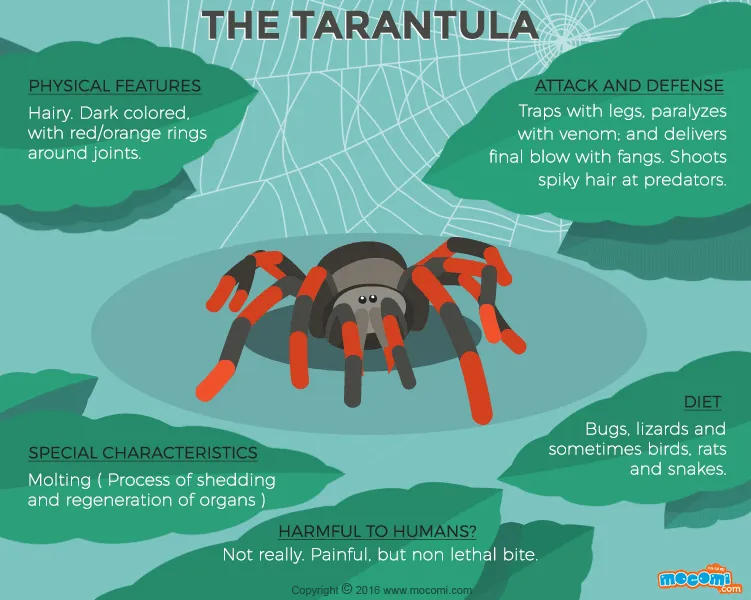
Tarantulas are generally not aggressive spiders, and they prefer to avoid confrontation whenever possible. However, they possess several defensive mechanisms that they use when threatened. Understanding their behavior is important for both their conservation and the safe handling of tarantulas in captivity. Their temperament can vary depending on the species, with some being more docile and others exhibiting defensive behaviors more readily. Learning about their natural behaviors and reactions allows enthusiasts to appreciate these creatures. Their defensive mechanisms are a crucial part of their survival strategy.
Defensive Mechanisms
When threatened, tarantulas can use a variety of defensive mechanisms. One common defense is to flick urticating hairs from their abdomen toward the perceived threat. These hairs are irritating and can cause skin and eye irritation. Another defensive behavior is raising their front legs and fangs in a threat posture. They may also bite, though this is usually a last resort. Some species also have the ability to stridulate, or make a hissing sound, by rubbing their legs or mouthparts together, which can startle potential predators. The effectiveness of these defense mechanisms can vary between species. These various defense mechanisms are crucial for their survival in the wild. These behaviors help keep them safe from threats.
Common Behaviors
Tarantulas exhibit a range of behaviors, including burrowing, web-spinning, and molting. Many tarantula species create burrows to provide shelter and protection from predators. They may line their burrows with silk to stabilize the walls and provide a comfortable living space. Web-spinning is another common behavior, particularly in arboreal species that use webs to create a home and catch prey. Molting is a crucial process for tarantulas, in which they shed their exoskeleton to grow. During this period, they are particularly vulnerable. Understanding these behaviors allows enthusiasts to provide the best possible care for tarantulas in captivity. Their behavioral patterns provide insights into their adaptation and survival strategies.
Lifespan and Reproduction
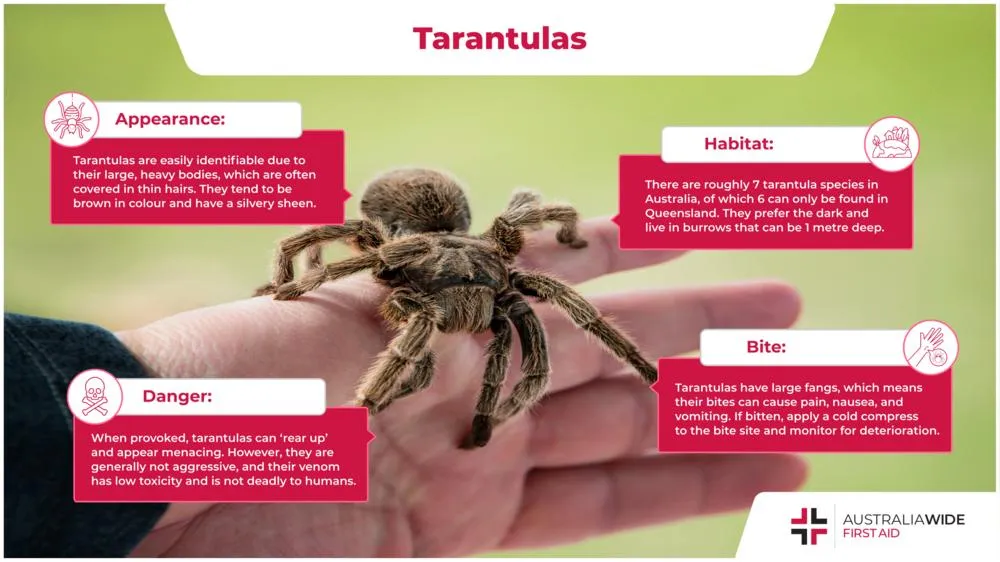
Tarantulas are known for their relatively long lifespans, particularly the females. Their life cycle involves a complex process of growth, molting, and reproduction. The lifespan of a tarantula can vary significantly depending on the species, sex, and environmental conditions. Understanding their lifespan and reproductive process is important for both their conservation and the responsible keeping of tarantulas as pets. Their long lifespans contribute to their survival and help ensure the continuation of their species. The reproduction process allows them to create new generations.
Reproduction Process
The reproduction process in tarantulas involves a series of stages, beginning with courtship. Males often use courtship rituals, such as drumming or displaying, to attract a female. Once a male and female have paired, the male deposits sperm into a web-like structure, which the female then uses to fertilize her eggs. The female lays her eggs in a silken egg sac, which she carefully guards until they hatch. After the eggs hatch, the spiderlings go through several molts before becoming adults. The reproduction process is a delicate process. Many factors affect the process, including environmental conditions and the health of the spiders.
Tarantula Life Cycle
The tarantula life cycle consists of several stages, starting with the egg and progressing through various molts. Spiderlings grow through a process of molting, shedding their exoskeletons to accommodate their growth. The frequency of molting decreases as the tarantula matures. Females can live for many years, and their life cycle is often much longer than that of males. Males typically reach maturity faster and have a shorter lifespan, often dying shortly after mating. The process of molting is a vulnerable time for them. Understanding this life cycle is crucial for both their conservation and the responsible keeping of tarantulas as pets. The life cycle is a fascinating biological process.
Conclusion
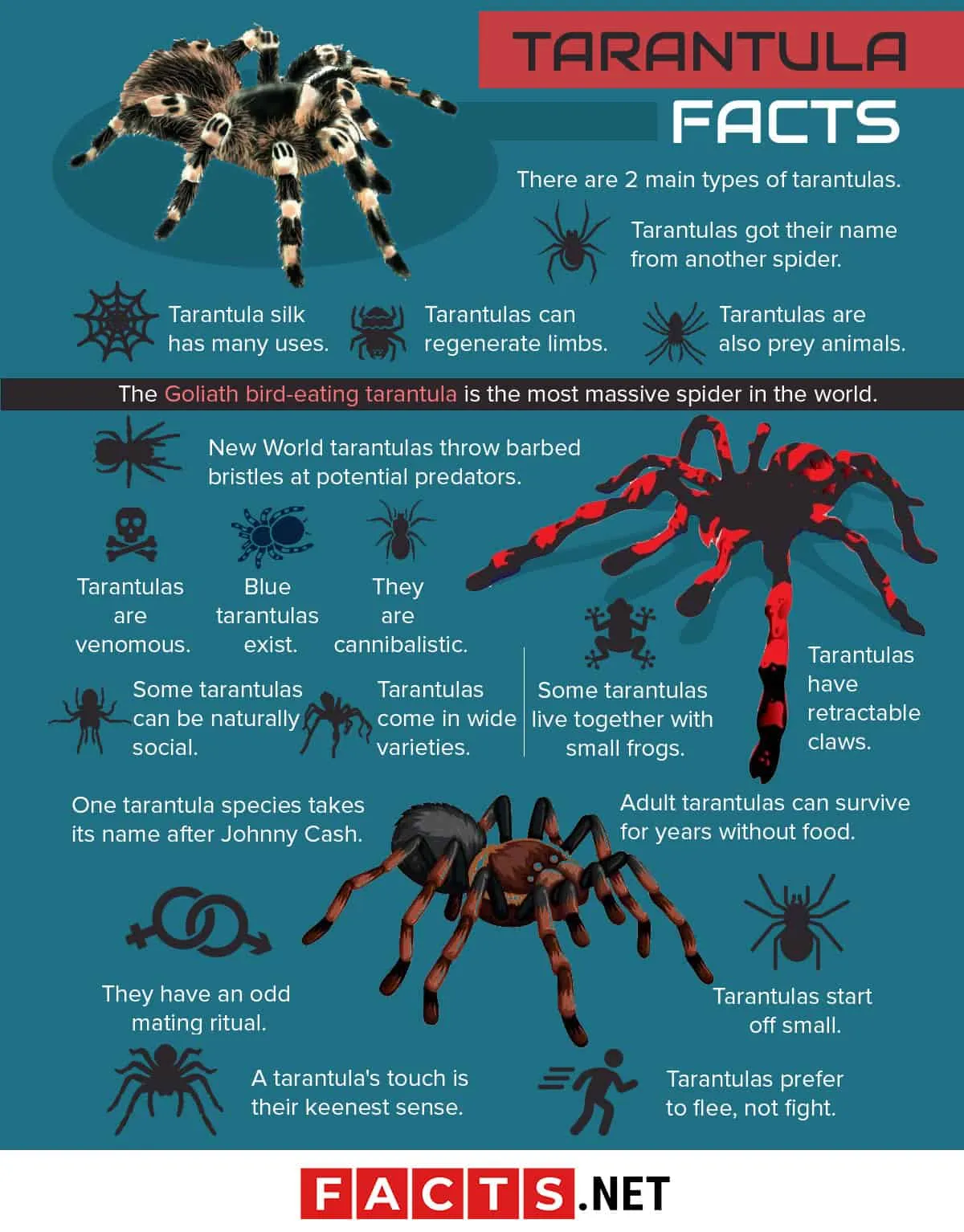
Tarantulas are remarkable creatures with unique characteristics and behaviors. From their impressive size and diverse appearances to their hunting techniques and defensive mechanisms, tarantulas have fascinated scientists and enthusiasts alike. This overview has explored their physical characteristics, habitats, diets, behaviors, and life cycles. Understanding these facts is crucial for both appreciating and protecting these amazing spiders. Their adaptability and resilience in various environments demonstrate their remarkable ability to thrive. With ongoing research and conservation efforts, we can continue to learn and appreciate these captivating creatures and ensure their survival for generations to come.
